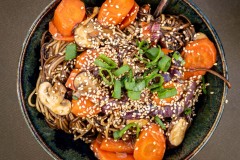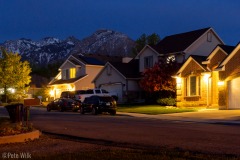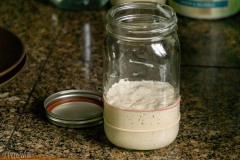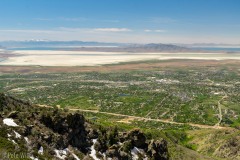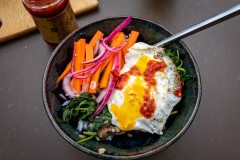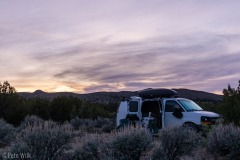It has been a few weeks since the previous installment of this largely pointless exercise. We’ve been doing about the same things, for the most part, aside from the last two weekends. More baking, much more. Caly and I each have healthy sourdough starters going and as a result there’s no shortage of bread around. Various offshoots such as pancakes, pita bread, zeppoles, have been made too.
The weekend of May 10th we headed a little north to Adams Canyon in Layton. It wasn’t all that interesting. Crowded start to the trail, little shade, and not a true summit made for decent exercise, but little quality.
This week I put the finishing touches on the van’s kitchenette. The design was largely done but the build took about two weeks plus off and on. The trouble was mistakes I made in cutting and also having to make due with a couple of borrowed cutting tools which were instrumental to finishing the task, but had some quirkiness in the trueness of the cuts to deal with.
Thursday and Friday I put the last touches on the finishing of the frame, drawer fronts, and top. I let everything dry overnight Friday. Saturday morning I was able to get everything into the van without a hitch and it looks good.
To finally overnight in our van, almost a year since we bought it, we decided to take a trip to the Utah West Desert to a spot called White Rock. It is 100 miles from the house, but got us out into the wilderness for about 24 hours, a nice change of pace. There were a fair number of people, mainly motorized enthusiasts, that were around on Saturday. Thankfully they cleared out Sunday morning and we had the place mostly to ourselves. We did a little easy climbing, even a 3 pitch route to get to the top of the namesake feature.
It was great to get out of the house for the first time in ages. Equally enjoyable was our mode of transport in the new van which worked great and we’re looking forward to more trips in the future in it.
As for the pandemic and when this thread of posts will end I, nor anyone else, can really say. The big question on everyone’s mind is how to start moving from lockdown to normal in a way and pace that makes the most sense. A “short” lockdown of a four to six weeks is somewhat digestible though unpleasant for most to accept. Beyond that people get restless, particularly when you aren’t face to face with the dire circumstances that NYC or other areas have faced.
The large incohesive nature of the US is putting some of the methods of getting back to normal to test. Other countries are also implementing what they feel is the best path to balance individual rights over public health and the economy. Perhaps time will show which style is most prudent.
My experience in product development leads me to believe that there may not be an obvious “winner.” The metrics used to measure success will tilt the scale in different directions. Public health, individual rights, and economic stability all have shared and in some ways competing priorities. South Korea’s intense contact tracing puts public health over personal rights and privacy. Is that right? It depends on who’s making the assessment of right and wrong.
Keeping as many people alive in your society seems like a moral obligation. However, according to numbers from the NHTSB I found the US between 2006 and 2018, has on average 107 automobile deaths per million residents or 33,528 people per year (𝝈=3,428). It could be argued that those are preventable deaths and therefore should be prevented through some kind of measures. Given that over the last 14 years those numbers have remained relatively consistent it would seem the US is not prioritizing public health (less automobile deaths) over economic health and personal rights.
Would the most bleeding heart liberal be willing to have their automobile limited to 15 miles an hour? Would they be willing to incur the significant economic toll that transport of goods across the country, heck even across town, would be if trucks also were limited to that speed? Probably not, but that doesn’t make the goal any less worthy of attaining. It means that everyone has a different set of metrics and priorities on how success is measured. By in large the US accepts a little more than 100 deaths per million people per year in traffic accidents for the ability to drive 65 mph and that goods and services can be delivered in a timely manner across town and the country.
The world’s governments are using their own set of metrics of success and acceptable costs to determine what needs to be done to balance the crises at hand. I hope that in 6 or 12 months there will be a clear indication of which one balanced public health, economic viability, and personal rights, but I doubt there will be a clear answer.


